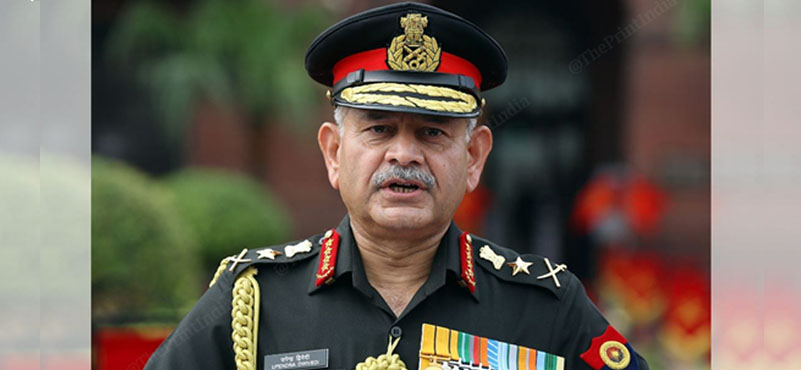Introduction
On the occasion of Kargil Vijay Diwas on 26 July 2025, General Upendra Dwivedi the Army Chief announced the formation of new “All-Arms Brigades” named “Rudra.” As part of the Indian Army’s drive towards modernisation and transformation, he said that all-arms Brigades and lethal Special Forces units were being developed to build a “future-oriented force.”
Speaking at Dras he said; “Today’s Indian Army is not only successfully addressing current challenges but is also rapidly advancing as a transformative, modern, and future-oriented force. Under this, new all-arms Brigades named ‘Rudra’ are being formed. This will have fighting components like Infantry, Mechanised Infantry, Armoured units, Artillery, Special Forces, and Unmanned Aerial Systems, supported by tailored logistics and combat support.”
He also stated that agile and lethal Special Forces units, “Bhairav” Light Commando Battalions, have been established to shock the enemy on the border. Every Infantry Battalion now includes Drone Platoons, while artillery has enhanced its firepower manifold through “Divyastra Batteries” and Loiter Munition Batteries. Army Air Defence is being equipped with indigenous missile systems.
As per reports two Infantry Brigades have already been converted into Rudra Brigades. The concept of Rudra Brigades is built on the Indian Army’s previous proposal of Integrated Battle Groups (IBGs). On the other hand, the Bhairav Commando Unit is a lethal Special Forces unit. It is intended for quick strikes and rapid border deployment.
The plan involves converting existing units and formations without fresh troop accretions. Presently it does not appear to have been accorded government sanction, hence the manpower and equipment would have to be offset from existing organisations and would create voids, which of course will have its own impact. But it is a seismically important shift in integration of various combat, combat support and logistic elements to fight in a multi domain environment together.
Existing System
Typically, a Brigade (three Infantry Battalions or their equivalent Regiments of Armour, Mechanised Infantry, Artillery, Army Air Defence with supporting troops), forms part of a division, which so far are also arm specific like an Armoured, Infantry or Artillery Division.

There are also Independent Brigades namely Armoured, Mechanised Infantry, Para, Infantry and Engineers with a mix of various arms and services which function directly under a Corps Headquarters.
As per reports, Rudra Brigades will comprise a mix of Battalions or Regiments from different arms. The composition, will vary depending on the operational requirements and envisaged tasks. These would also be adequately equipped with force multipliers like drones, surveillance equipment, and area saturation weapons.
For example, in the mountains, it may have two Infantry Battalions and an Artillery Regiment or in the plains it may have two Armoured Regiments a Mechanised Infantry Battalion, a Self-Propelled Artillery Regiment and a mobile Air Defence Regiment more suited for offensive operations. The latter being on the lines of the existing Independent Armoured Brigades. Along the Line of Control (LoC) it could comprise of Infantry Battalions along with Special Forces Elements.
The question therefore being asked in some quarters is whether the Rudra is just an upgraded form of these Independent Brigades, with certain additional elements such as drones and ISR capabilities. In other words, old wine in a new bottle, or does it mark a seismic shift in our war fighting philosophy and methodology?
Foreign Armies
The US Army has a Brigade Combat Team (BCT) which is the basic deployable unit of manoeuvre. It consists of combat arms and assigned support and fire units. It was designed to be self-contained; able to fight independently and have all the combat, support, and logistics capabilities required to conduct sustained military operations. This necessitated that capabilities at the Division such as artillery, engineers, and intelligence level be shifted to the Brigade. This was intended to provide greater flexibility, decrease the logistical footprint, improve ability to leverage command, control, communications, computers, intelligence, surveillance, reconnaissance, and precision fires to increase lethality, and meet the contemporary threats.
Integrated BCTs (IBCT) are designed for combined arms offensive operations in restrictive or complex terrain against conventional or irregular threats. The design is such that it has all the necessary capabilities to allow it to operate autonomously or semi-independently. The central capability of the IBCT resides in its lethality provided by the two or three infantry battalions and their ability to bring additional combat power to bear on an enemy force.
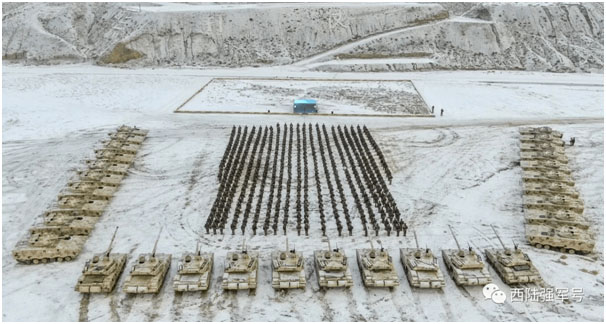
China’s, Combined Arms Brigades (CAB), are a key component of the PLA Ground Force, representing a shift towards a more mechanised and integrated force structure. These Brigades are designed to be highly mobile and capable of conducting combined arms operations, incorporating various combat arms like armour, infantry, artillery, and air defence, all within a single, integrated unit.
The CAB is the primary ground unit of action of China’s self-described “World Class Military,” designed to outmatch the US military by 2049.The PLA Army (PLAA) has 78 CABs spread across 13 Group Armies, which are Corps-sized formations. CABs vary in size from approximately 4,500 to 5,000 personnel. Their composition in equipment and personnel and the types of operations they are assigned is roughly equivalent to a US BCT.
The PLA appears is focusing on increasingly integrated systems and force structures that can conduct operations in and across all domains combining a range of kinetic and non-kinetic effects.
Russian has BTGs, or Battalion Tactical Groups, which are combined-arms units designed for high readiness and flexibility, playing a crucial role in modern military operations. However, what was witnessed recently especially in Bakhmunt, is that while such a formation was balanced in mechanised forces and supporting elements initially, it ran short of infantry, artillery, and air support. In Grozny-1995 it faced a similar problem due to a lack of infantry as dismounted infantry is critical when fighting in urban settings or seizing or holding terrain as its BTG’s had tons of metal but little manpower.
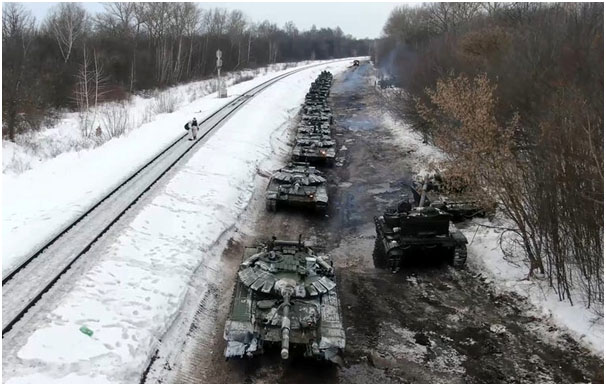
As a result, after the initial setbacks in Ukraine, the Russians became more flexible and adaptive and their Battalion’s and Brigades were provided tailored solutions based on their battle requirements by the higher formations which are somewhat similar to the Indian concept of Combat Commands and Combat Groups, which are flexible and tailor-made organisations for mechanised operations.
The Advantages
There are major advantages of going in for such an organisation, as an all arms integrated grouping of Armour, Mechanised Infantry, Infantry, Artillery, Air Defence Artillery, Special Forces, and UAVs operating under one Brigade will result as a game changer. These formations will provide rapid deployment and flexibility. They can be further tailored to certain terrain and missions will enable swift offensive or defensive actions. Dedicated combat support to include artillery, air defence, engineers, and communications as well as inbuilt logistics will allow operational independence and sustainment.
The present environment of technology-enabled warfare the use of drones, area saturation weapons, and precision-guided munitions increase battlefield effectiveness.
Combined arms warfighting argues against like-system fighting (i.e., tank against tank). Instead, combined arms require incorporating a diverse array of combat arms into a single organization, so that the weakness of any single arm is compensated for by the other arms’ strength. Further, when properly coordinated and synchronized, combined arms complement one another: an opponent defending itself against one arm, makes it vulnerable to another combat arm.
Building on the proposed Integrated Battle Groups and Cold Start Doctrine enables building up of tempo and generates more options for employment. While rethinking its use of force to meet today’s new challenges is a necessity but what is important is how these formations will be integrated into the current Army’s war fighting structures.
There are inherent challenges with regard to the logistic support and sustenance required to handle these formations, which may necessitate a change in the organisation of logistic units, especially the repair and recovery echelons. There will also have to be a relook at the staffing at the Rudra Headquarters, so as to be able to manage these combined arms formations. Finally, most importantly are the human resources, which include developing the skill sets required, and also developing a mindset to enable prosecution of the envisaged tasks in keeping with the operational design and force application matrix. As Lt Gen AB Shivane (Retd) put it, “this will require moulding competent leadership and directive style of command with traits such as boldness, initiative, audacity, innovative tactics and nonlinear thinking.”
Analysis
While most may see the timing of the announcement to be a fallout of Operation Sindoor but the Army has been working on the restructuring of formations as part of its transformation studies for the past few years.
India is confronted with a strategic and operational environment characterised by complex interactions between multiple domains and fronts. This proliferation of domains and the interactions within and across them necessitates developing and implementing an effective strategy and operational art. The challenge demands the development of new concepts to design future capabilities and force development, basically a coherent theory of how to prepare, operate, deter, fight and win.
Hence, this restructuring is based not only on the threat perceptions and changes manifesting in the character of war but also drawing lessons from the ongoing conflicts and experiences following both Doklam and Galwan as well as along the LoC. Drawing not only on internal analysis and expertise, but also on international perspectives. With this as a background, the concept of Integrated Battle Groups (IBG) was initially mooted by General Bipin Rawat and the formation of Rudras seems to be an outcome of this exercise.
The threshold of an atomic power has been debated ever since the first atomic bombs were dropped in 1945, thankfully that threshold has not been breached again. Nuclear deterrence between India and Pakistan has reduced the likelihood of major war but simultaneously increased the salience of military coercion below the threshold of war. It is in this nuclear overhang which is increasingly being seen as flexible that the Rudra Brigades will be operating.
Armies the world over base their structure on the kind of wars they are likely to fight, how they plan to fight them, and the best way to balance capability, capacity, and readiness. Hence, reorganising the armour and infantry capabilities into lighter yet more effective Brigade level formations can be seen as a fallout of the harder look taken regarding the evolving threats expected to be encountered on the modern battlefield.
Structural transformations succeed changes in doctrines and are based on the thought process of the concept of employment in a given terrain and environment keeping a particular response mechanism and end state in mind. Hence, these changes would have been well thought out.
However, the key lies in training and developing its unique skill sets as well as defining the command and control and balancing both centralisation and decentralisation in a manner that the Commander of the Rudra Brigade is able to have adequate operational freedom to identify the decisive point of an operation, synchronize assets in time and space and mass combat power against a capable and dynamic enemy to achieve the desired results.
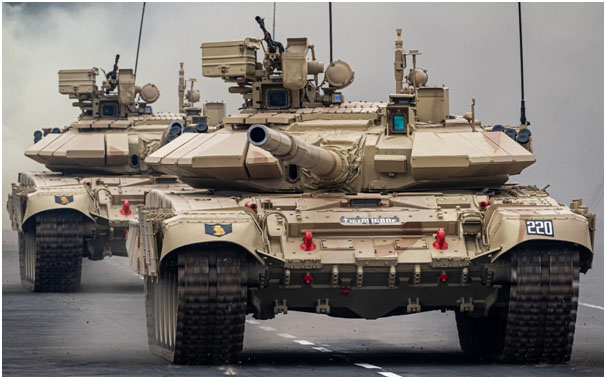
Some Unanswered Questions
The major question that needs to be answered is whether these formations indicate a shift in the Army’s military doctrine for conduct of operations which presently centres around a division and therefore will Divisions gradually give way to prosecuting operations at a Brigade level?
Further, integration of force multipliers such as EW, cyber, Air Defence and firepower beyond integral support is presently controlled at a higher level and hence decentralising these assets to a Brigade level has its own issues regarding the matrix at which a Brigade operates. Knitting together sensors and shooters and the long-range precision weapons that can target the enemy’s vital rear areas and lines of communication is essential but is unlikely to be meshed at a Brigade level.
More importantly is providing the robust structures for the larger span of control that these independent Brigades would require. These forces would also require to be self-contained with integrated tailor-made logistics as an enabling factor.
While writing on the Integrated Battle Groups (IBG’s), Lt Gen Ashok Shivane has stated that; “knowledge of employment of all arms and operational dimensions of battle space as the science of war and leadership cum human will as the art of war will result in decisive outcomes of IBGs. Risk taking, audacity and initiative are essential for success.” Therefore, he said that along with restructuring IBGs, we must focus on moulding competent leadership and directive style of command with traits such as boldness, initiative, audacity, innovative tactics, and nonlinear thinking. IBG commanders need to fight smart and not allow predictability and set piece operations to stall your tempo.
While currently these formations are being formed from within existing resources by offsets and creating voids in existing structures but they will need to have their organisational structure and equipment accorded the necessary government sanction with matching budgetary support sooner rather than later if this path is visualized as the way forward.
However, there is a question and a counter argument. Did such structures not exist in the Indian Army 45 years ago? Yes, they did. 45 years ago or even earlier we had Combat Teams, (at squadron/company level), Combat Groups, (at Regiment/Battalion level), and Combat Commands, (at Brigade level). These organisations comprised of all arms, tailormade for specific terrain and tactical situations. Only that they functioned independently as specific arms, supporting arms and logistical units in peace time but came together as one during hostilities. Their affiliations were specific and permanent, i.e., each unit/sub unit knew exactly where and under whom they were supposed to be deployed in war. No ad hoc structures. In fact, to take this argument further, the Mechanised Infantry, as a combat arm was raised for this specific purpose, i.e., to provide matching mobility to the infantry, to keep pace with the armoured columns. The counter argument being that, all that was required to be done was to make these affiliations permanent and call them, Combat Commands or Rudra or as you like. Point is that, these are not really novel ideas, the frame already existed. Notwithstanding that, time has come to formalise these groupings with inbuilt flexibility to adapt as per the operational requirement. There may also be the need to have two or more models, e.g., the desert sector could be armour predominant and the mountains could be infantry predominant and so on.
Conclusion
There is no doubt that the Indian Army’s Rudra Brigades represent a transformative step in modernising its operational capabilities along the borders with China and Pakistan. The all-arms integrated formations combining various combat elements and unmanned aerial systems into a single cohesive unit supported by dedicated logistics and combat support will be a force multiplier in contemporary and future conflicts.
This integration allows the Rudra Brigades to deliver swift, flexible, and technology-enabled responses to diverse border scenarios. It is also part of India’s larger strategy to build a modern, self-reliant military, integrating cutting-edge technology with traditional combat strategies to ensure national security in an increasingly complex geopolitical and multi domain environment.
Rudra gives tempo, better ISR, and a sharper combined arms edge potency. It is more modern more flexible but it needs to transform into a multi domain task force with the ability to coordinate air strikes, cyber and electronic warfare and jam enemy radars. There needs to be extensive coordination between different weapons systems on land with assets operating from the sky as well as in the domains of space and cyber. But the formation will become more complex with each new capability that needs to be integrated.
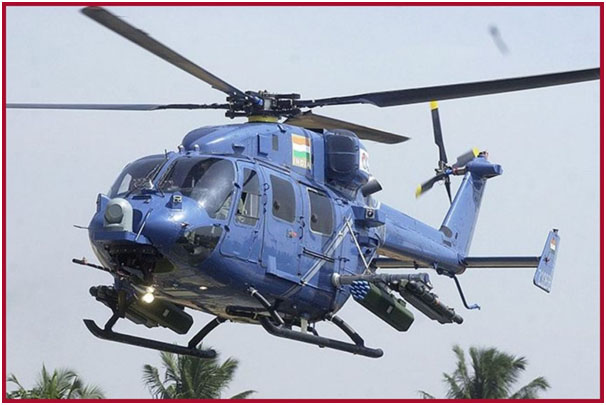
The EW, communication, Air Defence Control & Reporting linkages, Army Aviation, integration of sensors and any other capabilities available at the Corps HQ should also be integrated into the operational concept.
But transformation and restructuring is more than only new equipment and organization; it also involves doctrinal changes regarding responses along the full spectrum of conflict.
Undoubtedly, Rudra Brigades are a step in the right direction. This is a thoughtful initiative designed with lessons from past experiences adapting to future threats. Though the changes in organisation, equipment and tasking will need to be refined following validation of these formations under simulated operational conditions. The feedbacks will then need to be examined which will enable these formations to mature and evolve.
Successful military operations are the product of combined arms warfighting carried out by the appropriate force for both the threat and the operating environment. Their proficiency is the product of organisation, being well-led and capable of effectively integrating, synchronising, and executing all-arms tactical engagements and operations. The key being employability, interoperability, and access to capabilities between Services.
ABOUT THE AUTHOR
 Maj Gen VK Singh, VSM was commissioned into The Scinde Horse in Dec 1983. The officer has commanded an Independent Recce Sqn in the desert sector, and has the distinction of being the first Armoured Corps Officer to command an Assam Rifles Battalion in Counter Insurgency Operations in Manipur and Nagaland, as well as the first General Cadre Officer to command a Strategic Forces Brigade. He then commanded 12 Infantry Division (RAPID) in Western Sector. The General is a fourth generation army officer.
Maj Gen VK Singh, VSM was commissioned into The Scinde Horse in Dec 1983. The officer has commanded an Independent Recce Sqn in the desert sector, and has the distinction of being the first Armoured Corps Officer to command an Assam Rifles Battalion in Counter Insurgency Operations in Manipur and Nagaland, as well as the first General Cadre Officer to command a Strategic Forces Brigade. He then commanded 12 Infantry Division (RAPID) in Western Sector. The General is a fourth generation army officer.
 Major General Jagatbir Singh was commissioned into 18 Cavalry in December 1981. During his 38 years of service in the Army he has held various command, staff and instructional appointments and served in varied terrains in the country. He has served in a United Nations Peace Keeping Mission as a Military Observer in Iraq and Kuwait. He has been an instructor to Indian Military Academy and the Defence Services Staff College, Wellington. He is a prolific writer in defence & national security and adept at public speaking.
Major General Jagatbir Singh was commissioned into 18 Cavalry in December 1981. During his 38 years of service in the Army he has held various command, staff and instructional appointments and served in varied terrains in the country. He has served in a United Nations Peace Keeping Mission as a Military Observer in Iraq and Kuwait. He has been an instructor to Indian Military Academy and the Defence Services Staff College, Wellington. He is a prolific writer in defence & national security and adept at public speaking.

